Venturing into the wilderness for a camping trip opens the door to incredible natural experiences, but it also brings potential encounters with harmful flora and fauna. Understanding how to identify poisonous plants and insects isn’t just about avoiding discomfort—it can be a matter of safety and even survival. Every year, thousands of outdoor enthusiasts experience adverse reactions ranging from mild irritation to severe medical emergencies because they unknowingly touched a toxic plant or disturbed a venomous insect.
This guide will equip you with the knowledge to recognize common dangers, understand appropriate responses, and ensure your camping experience remains memorable for the right reasons.
Common Poisonous Plants in North American Camping Areas
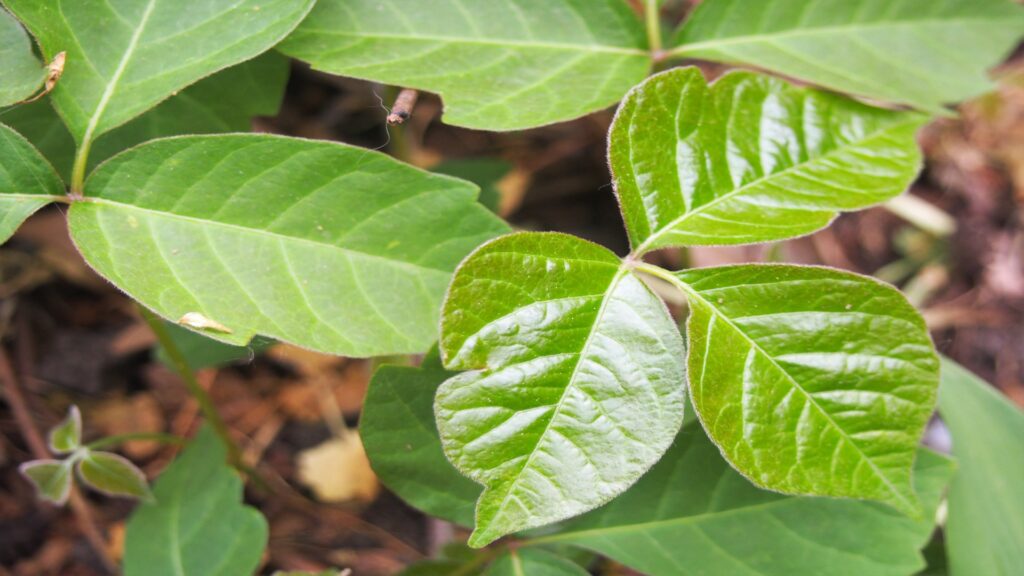
North America hosts several notorious poisonous plants that frequently cause problems for campers. Poison ivy, with its characteristic “leaves of three, let it be” arrangement, is perhaps the most recognized culprit, appearing along trails and at the edges of campgrounds across the continent. Poison oak shares a similar urushiol oil that causes the infamous itchy rash but typically has more rounded, oak-like leaves and is prevalent in western and southeastern regions.
Equally problematic is poison sumac, identifiable by its red stems and rows of 7-13 pointed leaflets, typically found in swampy, wet areas. Giant hogweed, though less common, deserves special mention as its sap can cause severe burns when skin is exposed to sunlight, making it particularly dangerous during summer camping trips.
Identifying Poison Ivy, Oak, and Sumac
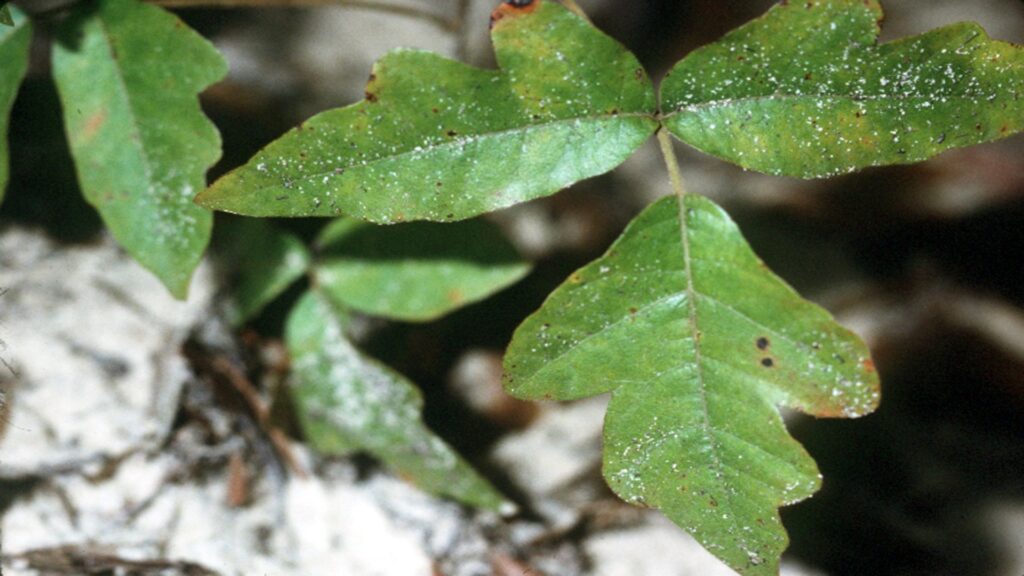
Successful identification of the “poison trio” requires understanding their distinctive characteristics. Poison ivy typically grows as a climbing vine or shrub with clusters of three leaflets that are often glossy green and may have notched edges, with the middle leaf usually having a longer stem. The appearance changes seasonally—new spring growth is often reddish, summer brings green leaves, while fall transforms them to yellow, orange, or red.
Poison oak resembles true oak leaves with its lobed edges but always maintains the “leaves of three” pattern and may produce small white or green berries. Poison sumac is the outlier, growing as a tall shrub or small tree with compound leaves containing 7-13 smooth-edged leaflets arranged in pairs with a single leaf at the end, and displays distinctive ivory-white berries that hang in loose clusters. Remember that all three plants can cause the same allergic reaction regardless of whether they look “healthy” or dried out.
Dangerous Fungi to Avoid
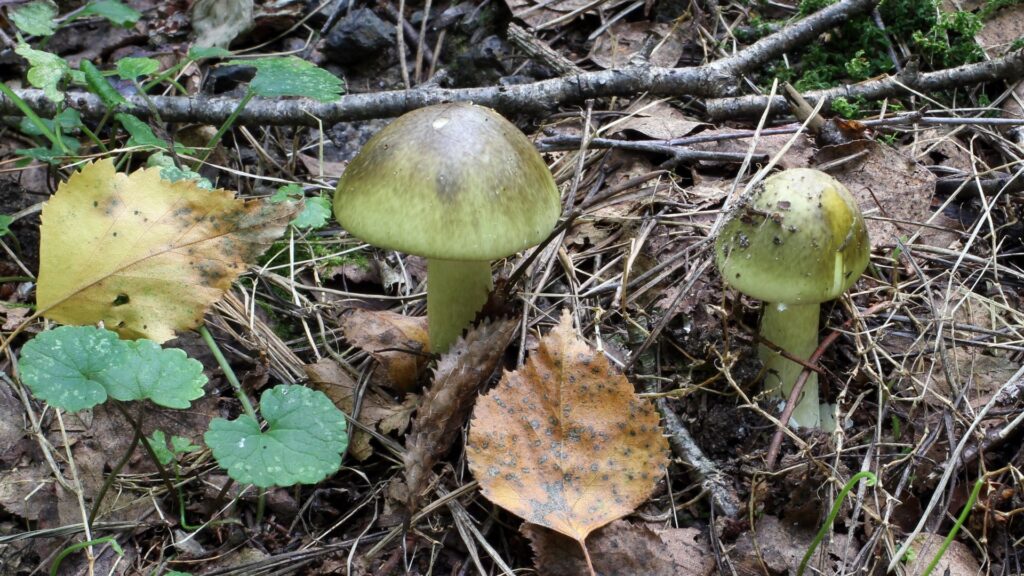
While mushroom foraging has gained popularity among outdoor enthusiasts, identifying dangerous fungi requires expert knowledge. The death cap mushroom (Amanita phalloides) is responsible for the majority of mushroom poisoning deaths worldwide, appearing deceptively unremarkable with its white-to-greenish cap and gills. The destroying angel species, characterized by their pure white appearance, contain the same lethal amatoxins that can cause liver failure even in small amounts.
False morels, sometimes mistaken for the edible and sought-after true morels, contain the toxin gyromitrin, which can cause severe gastrointestinal distress and potentially death. Even touching some toxic mushrooms and then touching your mouth or eyes can transfer enough toxins to cause symptoms, making the adage “when in doubt, leave it out” especially relevant for all wild fungi encountered while camping.
Dangerous Berry Lookalikes
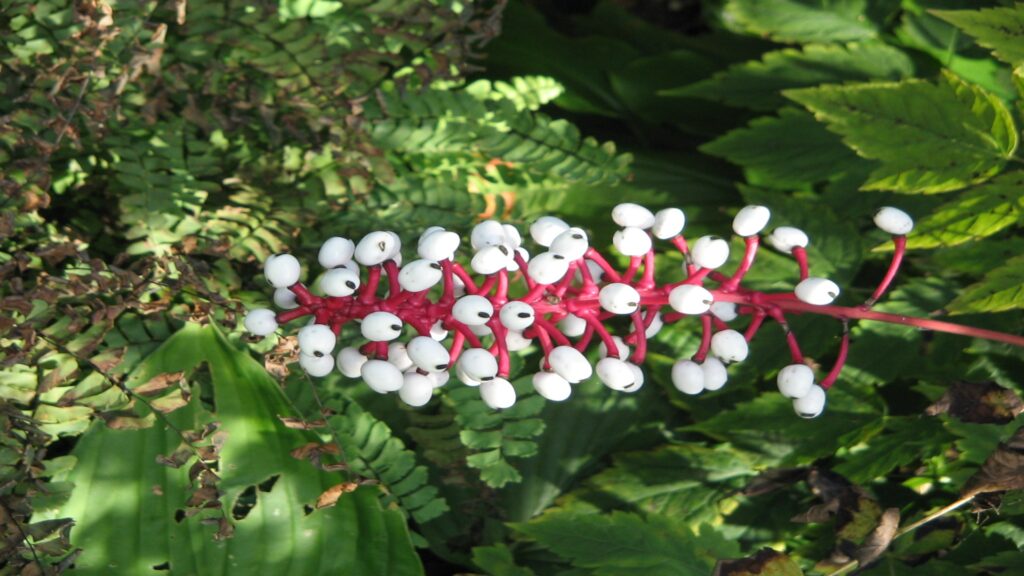
Berry foraging during camping trips requires extreme caution due to dangerous lookalikes that can cause severe illness or death. Deadly nightshade berries resemble blueberries or cherries but grow on plants with purple-green leaves and star-shaped flowers, containing potent toxins that affect the nervous system and heart. Pokeweed produces clusters of dark purple berries that might tempt inexperienced foragers but contain phytolaccatoxin and related compounds that can cause severe gastrointestinal symptoms.
White baneberry (also called doll’s eyes) produces striking white berries with black dots that resemble miniature eyeballs, containing cardiogenic toxins that can lead to cardiac arrest. Holly berries, with their festive red appearance, contain theobromine, saponins, and other compounds that can cause persistent vomiting and diarrhea if consumed. The safest approach is to never eat wild berries unless you have 100% positive identification skills.
Stinging Plants to Recognize
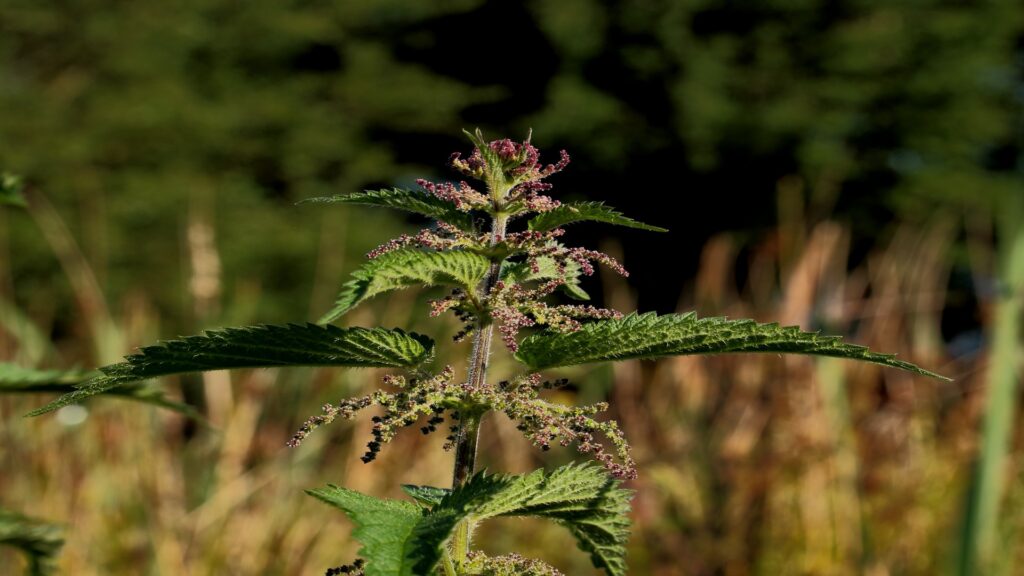
Beyond the poison ivy family, several plants defend themselves with physical irritants that can quickly turn a pleasant hike into an uncomfortable experience. Stinging nettle, found in moist, rich soils throughout North America, has heart-shaped leaves with serrated edges and is covered in tiny needle-like hairs that inject histamine and other chemicals when touched, causing an immediate burning sensation and raised welts.
The aptly named devil’s club, common in northwestern forests, features large maple-like leaves and stems densely covered with spines that easily break off in the skin and often cause infection if not promptly removed. Bull nettle (also called mala mujer or “bad woman” in Spanish) grows in dry, sandy areas of the southern and central United States and delivers one of the most painful stings of any North American plant, with effects lasting up to 12 hours.
Many hikers and campers find that carrying a topical antihistamine cream provides quick relief from these painful encounters.
Venomous Spiders in Camping Environments
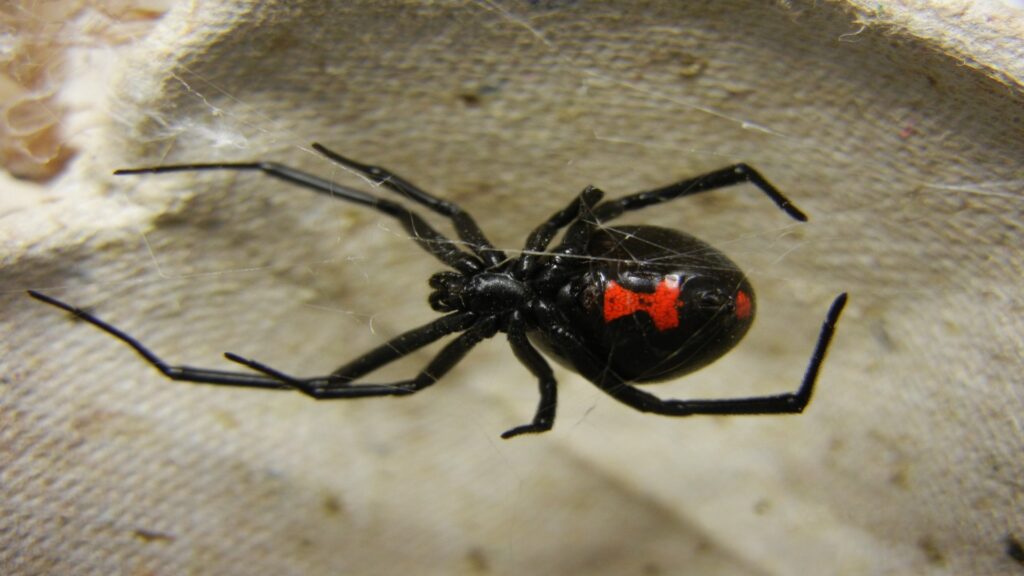
Camping often brings us into the territory of venomous spiders, with black widows and brown recluses being the most medically significant in North America. The female black widow is glossy black with a distinctive red hourglass pattern on the underside of her abdomen, typically building webs in dark, protected areas like woodpiles, underneath picnic tables, and inside outhouses. Brown recluse spiders can be identified by their violin-shaped marking on the cephalothorax (the body section where the legs attach) and possess necrotic venom that can cause tissue death around the bite site.
When camping, shake out shoes before putting them on, inspect sleeping bags before use, wear gloves when collecting firewood, and be cautious when reaching into dark spaces or crevices. Spider bites from these species warrant immediate medical attention, especially if symptoms include intense pain, muscle cramping, or spreading discoloration around the bite site.
Dangerous Caterpillars and Worms
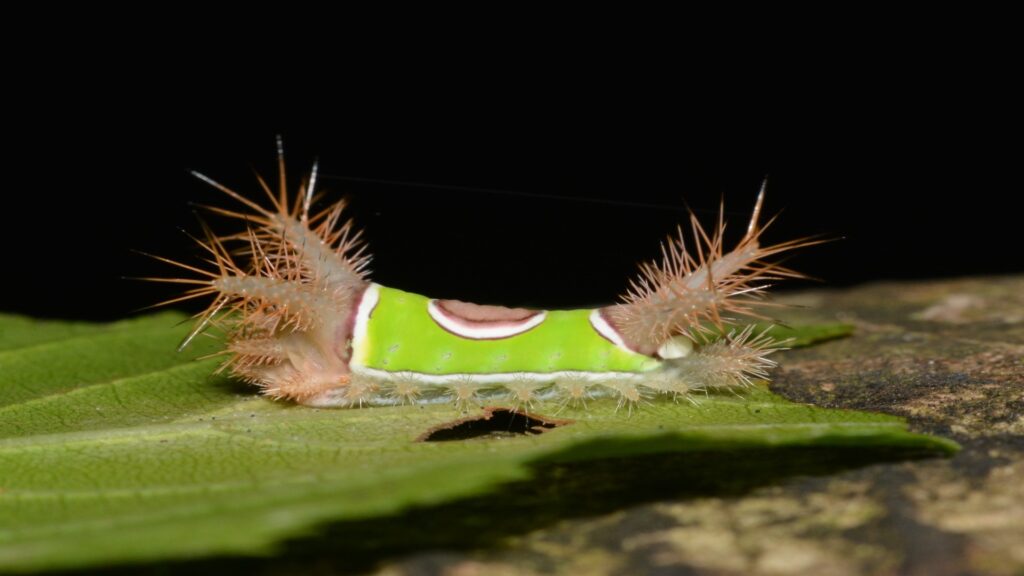
Some of the most innocuous-looking creatures in the camping environment can deliver surprisingly painful encounters. With its distinctive green “saddle” on a brown body, the saddleback caterpillar bristles with venomous spines that cause an intense burning sensation and potential allergic reactions.
Puss caterpillars (also called asp caterpillars) disguise their danger beneath a deceptively soft-looking coat of hair, but contact triggers hollow spines that inject venom, potentially causing severe pain, headache, nausea, and even breathing difficulties in sensitive individuals. The io moth caterpillar, with its striking green coloration and red and white stripes, possesses rows of branched spines that deliver venom with even light contact.
When setting up camp, be cautious around trees and shrubs where these caterpillars may feed, and teach children to observe but never touch unfamiliar caterpillars, no matter how colorful or interesting they appear.
Scorpions, Centipedes, and Other Arthropods
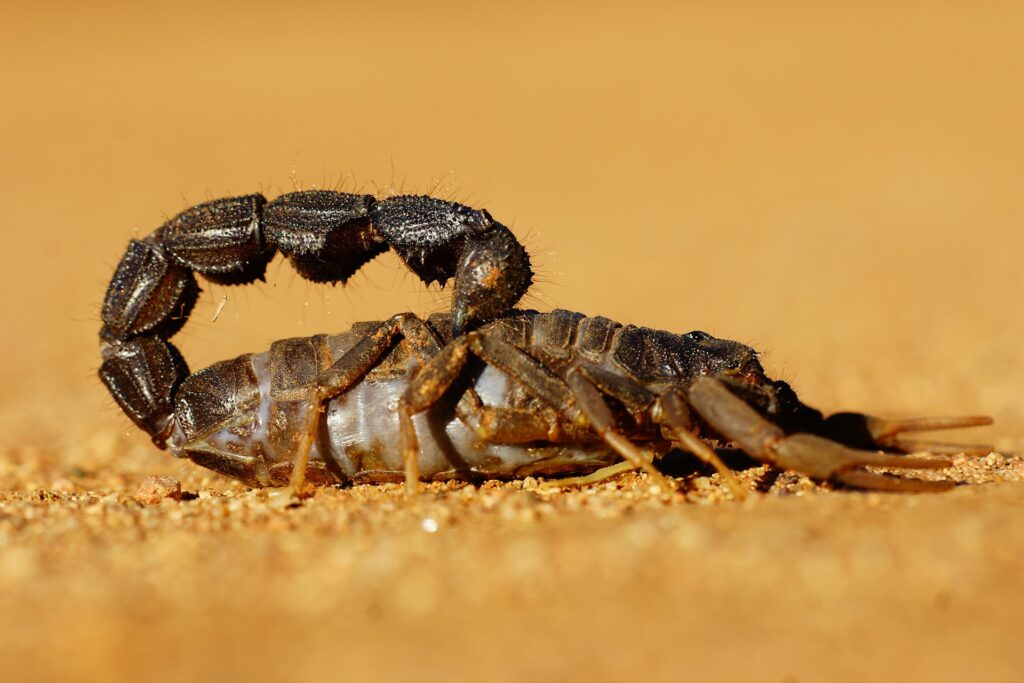
Arachnids and myriapods present particular concerns for campers in certain regions. Scorpions, especially abundant in southwestern deserts, hide under rocks, logs, and sometimes in shoes and sleeping bags during the day, becoming active at night with species like the bark scorpion capable of delivering extremely painful stings that may require medical attention.
Giant desert centipedes, reaching up to 8 inches long, possess modified front legs that function as venomous fangs, causing intense pain, swelling, and occasionally systemic symptoms like vomiting and headaches when they bite. Fire ants, common throughout the southern United States, can swarm when their mounds are disturbed, delivering multiple painful stings that develop into distinctive pustules and can trigger severe allergic reactions in sensitive individuals.
Using a portable UV light (scorpions fluoresce under UV) for nighttime perimeter checks, keeping sleeping areas elevated, and sealing tent openings can significantly reduce encounters with these venomous arthropods.
Identifying Dangerous Snakes
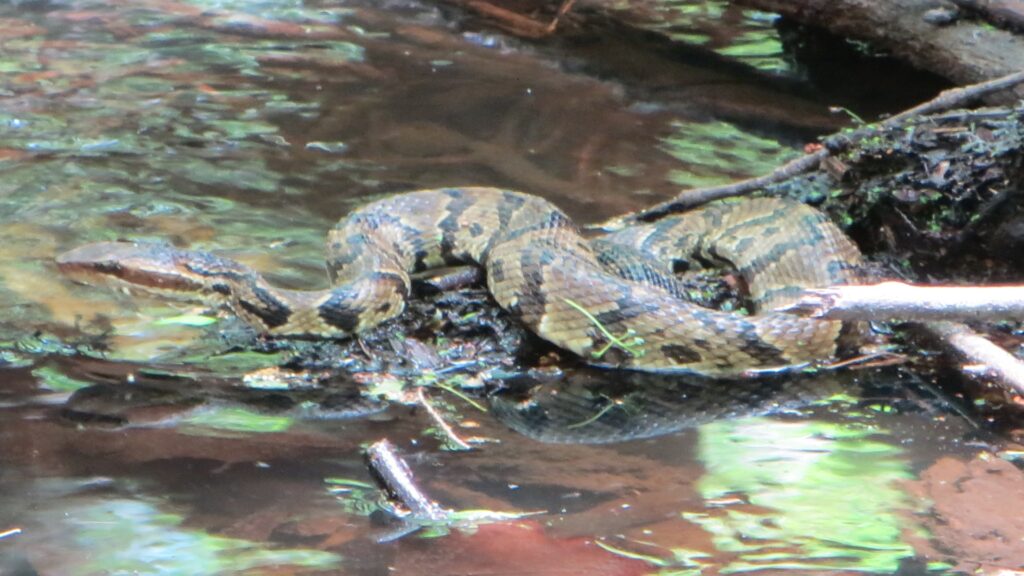
North America is home to several venomous snake species, with rattlesnakes being the most widespread and frequently encountered by campers. Rattlesnakes possess triangular heads, vertical pupils, heat-sensing pits between the eyes and nostrils, and the namesake rattle at the tail end, though not all individuals will rattle before striking. Copperheads feature a distinctive hourglass or Hershey’s Kiss pattern on a copper-colored body and are often found in forested areas with rocky outcroppings in the eastern and central regions.
Water moccasins (cottonmouths) have thick bodies with dark olive to black coloration and a distinctive white mouth lining visible when they display a defensive gape. Coral snakes, with their bright red, yellow, and black bands, follow the warning pattern “red touches yellow, kills a fellow; red touches black, venom lack” to distinguish them from harmless mimics.
When hiking, always use a walking stick to probe dense vegetation, wear closed-toe shoes, and watch your step around rocks and logs where snakes may rest.
Stinging Insects: Bees, Wasps, and Hornets
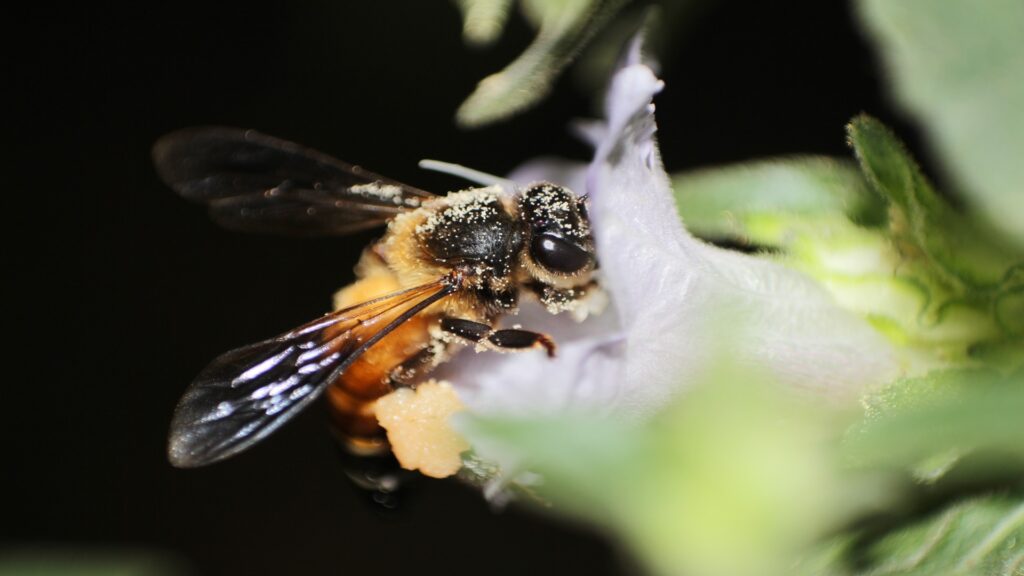
Encounters with stinging Hymenoptera are perhaps the most common painful wildlife interactions for campers, with the potential for serious medical emergencies in allergic individuals. Honey bees, recognizable by their fuzzy, golden-brown bodies with black stripes, typically only sting when threatened and leave behind their barbed stinger, which should be removed by scraping rather than pinching to avoid injecting more venom.
Yellow jackets, with their characteristic bright yellow and black markings, nest in the ground or in hollow logs and can become aggressive, particularly in late summer, when defending their colony or competing for food at picnic sites. Bald-faced hornets, wearing distinctive white facial markings on black bodies, build large paper nests in trees or shrubs and can deliver multiple painful stings when disturbed.
Most importantly, campers with known allergies should always carry emergency epinephrine, wear medical alert identification, and ensure companions know how to administer emergency medication if anaphylaxis occurs.
Treatment for Plant Contact and Insect Stings
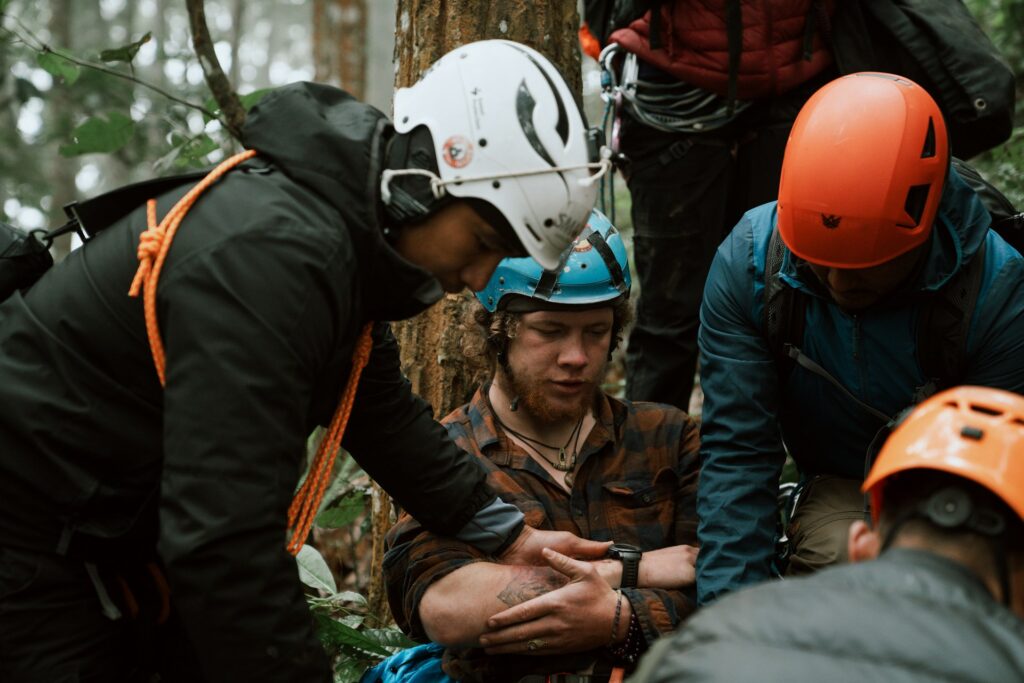
Immediate and appropriate response to poisonous plant contact or venomous insect encounters can significantly reduce suffering and prevent complications. For urushiol oil exposure from poison ivy, oak, or sumac, wash the affected area with soap and cool water as soon as possible, ideally within 10 minutes of contact, as the oil bonds to skin within 30 minutes; special products like Tecnu or Zanfel can help remove the oil even after it has bonded. For insect stings, remove any stinger by scraping with a credit card (not squeezing with tweezers, which can inject more venom), then clean the area and apply cold compresses to reduce swelling.
Over-the-counter antihistamines can help manage both plant-induced rashes and insect sting reactions, while hydrocortisone cream can reduce inflammation from both sources. Seek emergency medical attention immediately if you experience spreading redness, difficulty breathing, dizziness, or swelling of the face and throat after either plant contact or an insect sting, as these may indicate a severe allergic reaction requiring professional intervention.
Prevention Strategies and Safety Gear
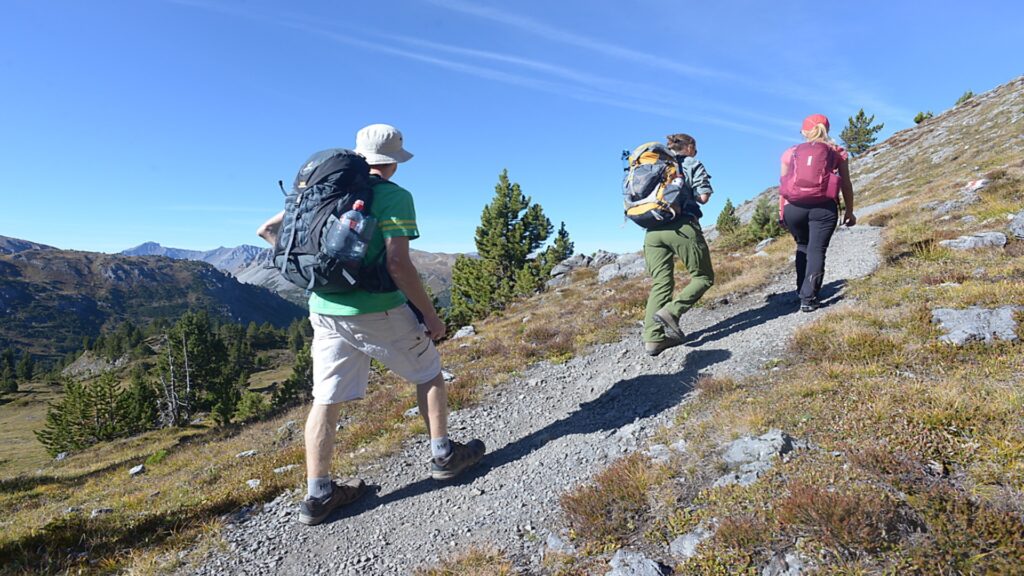
Preventing encounters with poisonous plants and venomous insects begins with proper preparation and awareness. Wear appropriate clothing for your environment, including long pants, long-sleeved shirts, closed-toe shoes, and high socks, particularly when hiking through dense vegetation where poisonous plants may lurk. Apply EPA-approved insect repellents containing DEET, picaridin, or oil of lemon eucalyptus to exposed skin, and consider treating camping gear and clothing with permethrin for additional protection against ticks and other arthropods. Pack a comprehensive first aid kit containing antihistamines, hydrocortisone cream, calamine lotion for plant rashes, and an emergency epinephrine injector if anyone in your group has known severe allergies.
Before your trip, research the specific dangerous plants and insects common to your destination, as regional variations exist, and download identification apps or bring field guides to help with on-the-spot identification challenges.
Teaching Children About Natural Hazards

Educating children about potential dangers in nature requires a delicate balance between instilling caution and encouraging exploration. Create a pre-trip learning session using pictures of local poisonous plants and insects, teaching simple identification rules like “leaves of three, let them be” for poison ivy or the distinctive coloration patterns of venomous snakes native to your camping area. Establish clear rules about not touching unfamiliar plants, insects, or other wildlife without adult supervision, emphasizing the “look but don’t touch” principle that allows for observation without risk.
Practice identifying safe versus dangerous species using a game format, perhaps creating a nature scavenger hunt where children identify common harmless plants and leave the dangerous ones alone. Most importantly, teach children to immediately tell an adult if they think they’ve touched a poisonous plant or been stung by an insect, emphasizing that quick reporting leads to better outcomes and is never something they’ll be punished for.
Conclusion
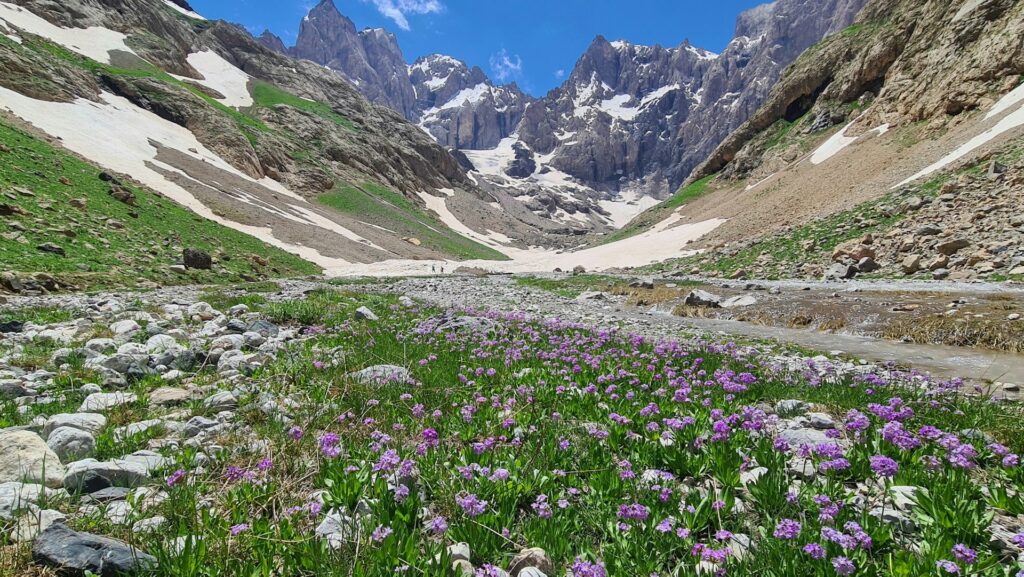
The wilderness offers boundless beauty and adventure, but it demands respect for its less hospitable elements. By learning to identify poisonous plants and venomous insects, you transform potential dangers into manageable risks. This knowledge doesn’t just protect you—it deepens your connection with the natural world through greater understanding.
As you prepare for your next camping trip, remember that awareness is your best defense, prompt treatment your second line of protection, and proper preparation the foundation of a safe outdoor experience. With the right knowledge and precautions, you can focus on creating magnificent memories rather than managing misadventures. Happy—and safe—camping!

